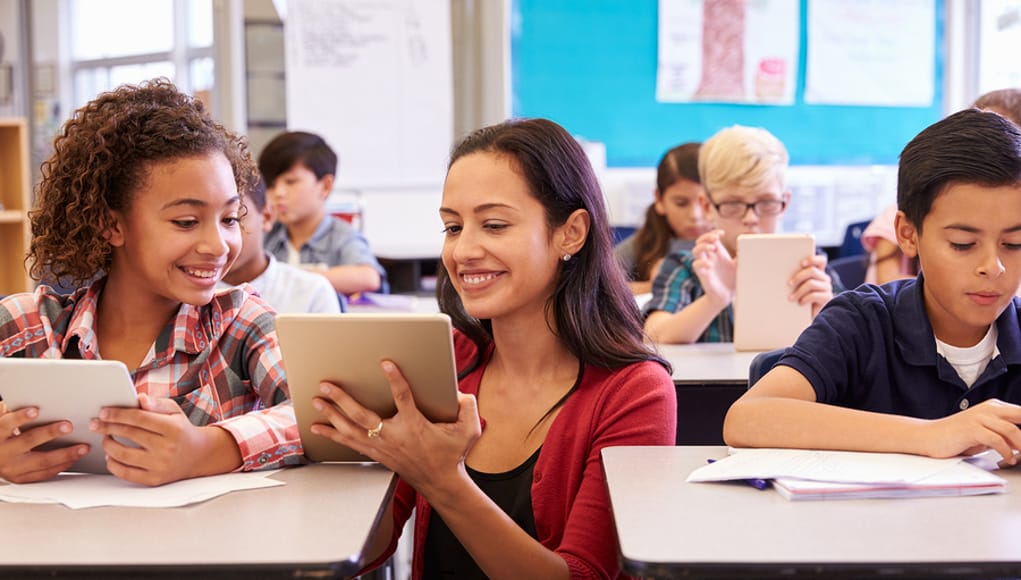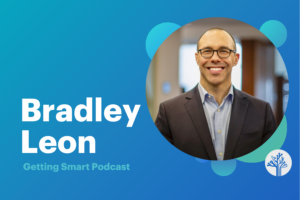Universal Design for Learning as a Framework for Digital Equity

From the World Economic Forum to the Partnership for 21st Century Skills, consensus exists that today’s students need to develop as lifelong learners. Beyond traditional content knowledge and skills, they also require technology literacy such that they can master a host of Cs, including communication, collaboration, creativity, critical thinking, citizenship, character development, computational thinking and coding.
However, since before the turn of the century, policymakers and scholars have documented the existence of a digital divide. Paul Atwell defined this as the gap between the “information haves and the information have nots.” Though organizations such as CoSN and programs such as E-Rate have helped to increase student access to devices and high-speed internet in school, the 2016 National Education Technology Plan warned of an even greater digital equity challenge: the digital use divide. Not only do students need equitable access, but they also require equitable opportunity to develop as expert learners.
For learning to be truly equitable, the environment needs to meet the individual needs of ALL learners—a premise that sits at the heart of Universal Design for Learning (UDL). As a framework, UDL acknowledges that every student has different needs, interests, and requirements for learning. Therefore, curriculum, instruction and assessment should be adaptable by both the teacher and student. Anne Meyer and David Rose, who developed UDL, argue that equitable learning experiences should tap into the recognition, strategic and affective networks of a student’s brain. In other words, they should take into account the what, the how, and the why of learning.
The What (Recognition Networks)
If the goal is for all students to have equitable access to learning, the first step needs to be equitable access to the curriculum. Technology creates the opportunity for students to customize displays of information to both read and hear text, as well as to learn via a range of modalities from video to virtual reality. When students have devices that support them as learners, they can instantly access needed scaffolds and supports such as dictionaries, translators, text-to-speech, and links to related content or resources.
Equally important, digital equity implies that the curriculum is both accessible to students and representative of them. Teachers and students can take advantage of online resources to ensure that content, examples, theories and people represent multiple cultures and not just a single dominant view. Because digital technology facilitates access to more than just a standard curriculum from a single canon, it allows students to make more meaningful connections. And yet equitable access and representation are only the first steps to UDL. Students also need opportunities to consume technology and create with it.
The How (Strategic Networks)
Beginning in 2001, numerous scholarly studies have documented the existence of the digital use divide in education. These researchers have found that students in underserved schools tend to use technology for test-prep, drill and practice exercises, or remediation rather than active creation and knowledge construction. As S. Craig Watkins and Alexander Cho explain in their book The Digital Edge: How Black and Latino Youth Navigate Digital Inequality, with the rise of mobile devices, more students have access to digital tools. What they lack, however, is access to the resources and instruction required to develop the cognitive skills valued in a global economy.
A UDL curriculum not only represents different voices and viewpoints but also promotes the idea that students require different tools and strategies for organizing and expressing their thinking. When students learn how to use technology to create multimedia artifacts as evidence of their understanding and knowledge, they gain access to opportunities that are not bound by the constraints of an 8.5” x 11” piece of paper. By creating avenues for students of all cultures, socioeconomic backgrounds, and neurological profiles to leverage a range of technologies for action and expression, the possibility exists to bridge the digital use divide and ensure that students have both equitable access and opportunity.
The Why (Affective Networks)
In 1949, neuroscientist Donald Hebb famously stated, “neurons that fire together, wire together.” This axiom essentially states that attention is a critical component of learning. Similarly, Professor Josh Eyler argues that curiosity is an equally critical condition. Without attention and interest, students lack the motivation to actively learn. Within the UDL framework, this is the argument that technology supports a student’s affective network—and therefore their interest and motivation.
Beyond novelty, digital technology has the potential to motivate students to learn. It creates access to experts, communities, content and resources. Technology also allows teachers to configure the learning environment in a way that allows for a more personal experience—one that relates to student interest, affords agency, allows for multiple forms of representation, scaffolds student experiences, and encourages creative expressions of learning. As a framework for creating digital equity, UDL recognizes that different tools, topics, and strategies engage and inspire students in different ways.
Equitable Access to Expert Learning
According to the CAST Guidelines for UDL, expert learners are purposeful and motivated, resourceful and knowledgeable, strategic and goal-directed. An expert learner ultimately understands how to make their learning environment work to meet their needs such that they can tackle any novel problem, task or situation. Given the rhetoric that today’s students need to be adaptive and agile, digital equity requires more than just access to devices and high-speed internet. By using UDL as a framework for digital equity, districts, schools, and teachers can move beyond just providing equitable access to technology and begin to tackle the challenge of equitable access to learning.
For more, see:
- Strategies for Tackling Digital Equity
- Future Trend: Designing Schools for How Humans Learn
- Education in the Age of Agility
Stay in-the-know with innovations in learning by signing up for the weekly Smart Update.






Connie Holmes
love this great info